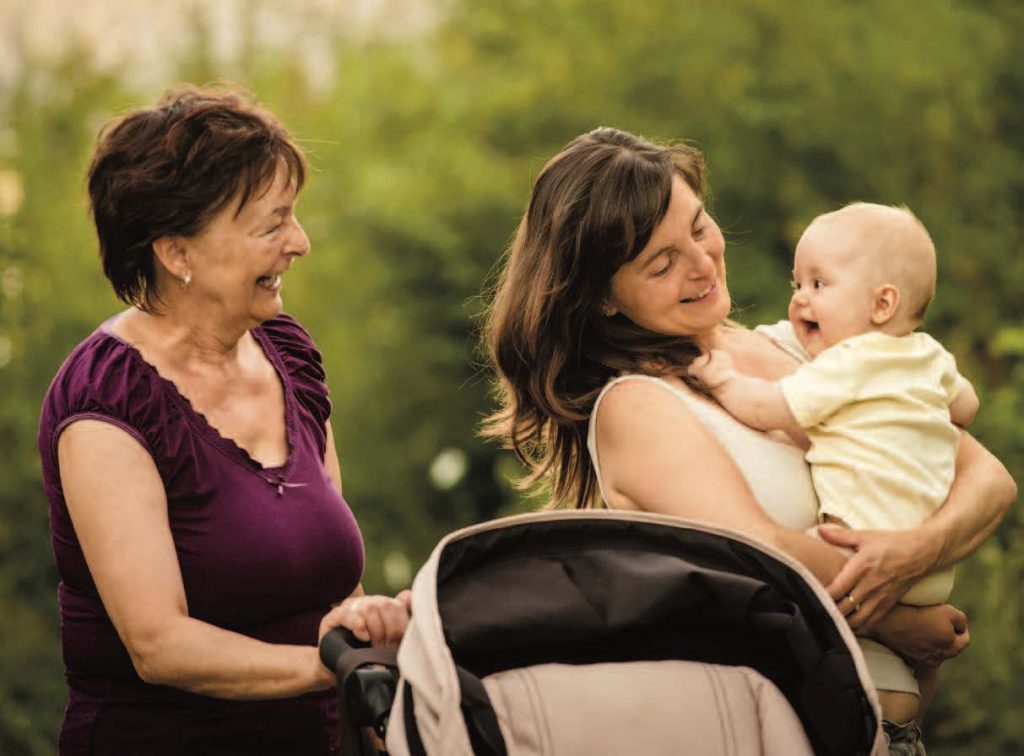Seeking happiness and health as we grow older
By Peggy Edwards| May 2019

What keeps us happy and healthy as we go through life? If you think it is fame and money, you’re not alone — but, according to psychiatrist Robert Waldinger, you’re mistaken. As the director of the impressive 75-year-old Harvard Study on Adult Development, he has unprecedented access to data on true happiness and satisfaction in life.
Waldinger shares some of the major lessons from the Harvard Study in a popular TED Talk on YouTube (What makes a good life?Lessons from the longest study on happiness).
The big take-away from his talk is this: Good relationships keep us happier and healthier, and loneliness kills. On the contrary, people who feel lonely and more socially isolated than they want to be, are less happy and healthy and tend to die younger than those with good social connections. Researchers in the study have identified four other related lessons about what predicts happiness and health as we grow older:
1. A happy childhood has long-lasting effects.
Having warm relationships with parents and siblings in childhood is a good predictor you’ll have warmer, more secure relationships with those closest to you when you’re an adult, and that you will be less likely to feel depressed as you age.
2. People with difficult childhoods can make up for them later in life.
Regardless of experiencing difficult childhoods themselves, those who engaged in nurturing and guiding the next generation in mid and later life (what psychologists call “generativity”) were happier and better adjusted than those who did not. Generativity is not dependent on being a biological parent or grandparent. While people can develop it by raising children, they can also exhibit it in other situations where they mentor young people and “give back” to the next generation.
3. Learning how to cope well with stress has a lifelong payoff.
Some ways of managing stress and relieving anxiety are more effective than others. Positive coping methods include sublimation (e.g. using exercise as a means of venting frustration and anger), altruism (satisfying internal needs through helping others), and suppression (putting worries out of mind until you can do something to plan for the future). Maladaptive coping strategies include denial, acting out, and projection (ascribing our own unacceptable qualities or feelings to other people). Those who used positive coping methods to deal with stress had better relationships with other people. This, in turn, predicted happier, healthier aging in their 60s and 70s.
4. Time with others protects us from the bruises of life’s ups and downs.
Spending time with other people made study subjects happier on a day-to-day basis. Good relationships also acted as a buffer when times were tough. In particular, time with a partner or spouse seemed to protect them against the mood dips that come with physical pains and illnesses associated with aging.
Linking happiness and healthy aging
Several other large, high-quality studies provide evidence linking happiness and healthy aging. One is the well-known study of 180 “happy” nuns. Those who described more positive emotions (such as joy, looking forward to the future and feeling blessed) tended to live longer than nuns who described more negative emotions. By age 80, the happy group lost only 25 per cent of its population compared to 60 percent of the less happy nuns.
Another is a study in Okinawa, Japan which has the highest life expectancy for people over 65 and the highest percentage of people over the age of 100 in the world. While genetics, social support, and healthy lifestyles contribute to their aging long and well, researchers have also found that the centenarians in Okinawa are happy and maintain a positive outlook on life. They have strong coping skills and a deep sense of spirituality, meaning, and purpose.
These studies do not show that happiness has any sort of reparative function. There is no convincing evidence that happiness can cure existing problems such as arthritis, cancer or cardiovascular disease. But it does suggest that happiness may have a preventative effect. Indications of happiness (e.g. optimism, positive emotions, life satisfaction and meaning in life) are associated with living a longer, happier life.
Developing the happiness habit
Can we train ourselves to be happy? YES! says Neil Pasricha, Canadian author, Harvard MBA and popular public speaker about happiness. Pasricha is best known for his Book of Awesome series and The Happiness Equation, which are international bestsellers.
Here is Pasricha’s recipe for happiness practices — what he calls the Big Five ways to train your brain to be happy. Just like driving a car, throwing a ball or playing the piano, you can learn to be happier.
Do one or more of these for 20 minutes per day:
Walk
Studies have shown that people who are physically active on a regular basis have greater feelings of excitement and enthusiasm than those who are sedentary. How much? Just half an hour of brisk walking three times a week.
Journaling about good things
Writing for twenty minutes about a specific, positive experience in your day can dramatically improve happiness. Why? Because you relive the experience as you’re writing it and then again, every time you read it. Journaling about a positive experience or feelings of love and friendship helps us remember positive times, good relationships and the things we like about the people in our lives.
Random acts of kindness
As we get older, we better understand that little acts of kindness such as paying for someone’s coffee, shovelling a neighbour’s driveway, or giving a hand to a harassed mother with toddlers in tow, are good for us as well as for others. Studies show that people who carry out five random acts of kindness per week report higher happiness levels than control groups who do not. Why? They feel good about themselves and people appreciate them.
Meditation
A research team looked at brain scans of people before and after they participated in a course on mindfulness meditation. What happened? After the course, parts of the brain associated with compassion and self-awareness grew, while parts associated with stress shrank. Meditation can “rewire” your brain to help raise your happiness levels. I thought I couldn’t do it. Then a friend referred me to “Andy” at Headspace (www.headspace.com). His short, guided meditations helped me overcome my hesitations and to make brief meditation a part of my day a couple of times a week.
Five gratitudes
Research has shown that people who write down things they are grateful about are happier than those who do not think about and express their gratitude and blessings. Use a notebook, journal or computer and write down three to five things you are grateful for from the past week. Be specific. Don’t just say “I am grateful for friends,” but rather, “I am grateful for the time I spent with Mary on Tuesday. We shared some great laughs and a big hug.” They can be simple, everyday things such as the symphony you heard on the radio, the fresh smell of clean sheets, or a cardinal spotted in your backyard. If you can be happy with simple things, then it will be simple to be happy.
Happy people don’t have the best of everything. They make the best of everything. Tell me about what makes you happy as you grow older, and how you practice the happiness habit. Write to me at: wanderingpeggy@me.com
Peggy Edwards is a well-known writer and speaker on aging and health and is a co-author of The Healthy Boomer: A No Nonsense Midlife Health Guide for Women and Men and The Juggling Act: The Healthy Boomer’s Guide to Achieving Balance in Midlife, available at amazon.ca.







